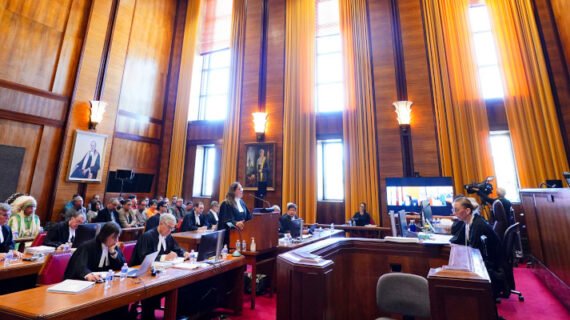June 21 marks National Indigenous Peoples Day, a day that recognizes and celebrates the unique histories, diverse cultures, and contributions of First Nations, Inuit, and Metis peoples. It was introduced in 1996 and was established in response to a 1995 recommendation set out by the Royal Commission on Aboriginal Peoples.
While this holiday has helped to bring knowledge and awareness to Canadians about Indigenous histories and cultures, we must look beyond dated assumptions—especially on a day like today— and consider the tangible contributions of First Nations peoples in weaving together the strong foundational economic fabric of our country.
Canada is built on centuries of business and trade between Nations on these lands, whether it was between First Nations prior to contact or between First Nations and Europeans in the years following the contact period. This entrepreneurial focus has endured through time and managed to keep some form despite the 150-plus years of restriction brought by the implementation and rigorous enforcement of the Indian Act—the ultimate red tape.
Today, we are seeing the impacts of a dedicated focus on reconciliation extend beyond awareness of the darker shades of our shared history and toward recognition that First Nations are leading the country through major project development.
At a time when the regulatory framework seems to frustrate rather than encourage Canadian ambition, it should be unsurprising that First Nations are pushing through these and other challenges to advance key projects that benefit all, First Nations peoples and Canadians alike.
Consider the following precedent-setting examples:
Wataynikaneyap Power
Driven by two simple objectives—to provide reliable and accessible energy by connecting remote communities to the provincial grid and to work in partnership to explore transmission development and ownership—the vision of 24 First Nations came to light when it formed Wataynikaneyap Power LP in partnership with Fortis Inc. The Wataynikaneyap is a licensed transmission company equally owned by 24 First Nations (51 percent), in partnership with Fortis Inc. and other private investors (49 percent), with a schedule to have the First Nations become 100 percent owners over time. It has been identified as an unprecedented undertaking. It will develop, own, and operate just over 1,800 kilometres of 230kV, 115kV, and 44kV lines in northwestern Ontario. While the total cost of the projects is estimated at $1.9 billion, this project is expected to save $1 billion and is estimated to create 769 jobs during construction and bring $900 million in social value.
Athabasca Indigenous Investments
Described as the largest energy-related Indigenous economic partnership transaction in North America (so far), Athabasca Indigenous Investments (Aii) is a pipeline project that includes an 11.57 percent Indigenous ownership in seven Enbridge pipelines worth $1.12 billion. The pipelines transport about 45 percent of Canada’s bitumen sands production, under contract, to key export hubs in Edmonton and Hardisty, Alberta. This Indigenous acquisition deal was made possible by loan guarantees from the Alberta Indigenous Opportunities Corporation (AIOC), which supports Indigenous investments with loan guarantees backed by Alberta.
Thebacha Limited Partnership
Considered to be a bit ahead of the curve, the Thebacha Limited Partnership saw the Mikisew Cree and Fort McKay First Nations joining forces to buy 49 percent of Suncor’s East Tank Farm development in 2017, resulting in the largest and most significant business transaction in Indigenous history up until last year. Handling production from Suncor’s Fort Hills oil sands mining project, the East Tank Farm provides bitumen storage, blending and cooling facilities, and connectivity to third-party pipelines. The two First Nations independently financed the acquisition. Other benefits noted by the Indigenous leaders include improved housing, culture, community infrastructure, youth and elder care, economic sustainability, and education and training for generations to come.

It is well established that the best outcomes flourish from strong partnerships. And these noted successes, and others, are no exception. First Nations are positioned to contribute to advancing a quality of life for their citizens, and subsequently for Canadians, because they once again have the wing span to do so. Industry is initiating conversations with potential First Nations partners long before the project has been started. Old school threats of running a bulldozer through lands have been parked in the past—and let’s hope they stay there. Industry’s focus on ensuring hiring and contracts prioritize First Nations peoples local to project sites ensures that those equity partnerships are being extended to ground-level where First Nations peoples and Canadians are working shoulder-to-shoulder. And, increasingly, we are seeing a number of First Nations initiating discussions with industry on partnership opportunities.
Of course, new heights can be achieved if everyone pitches in, especially the federal government. Here are some solutions that could help us get there: Creating avenues nationally for First Nations to access capital to buy parts of major projects, building on Alberta’s model at the Alberta Indigenous Opportunities Corporation, will ensure that historical financial barriers are removed; Amending existing legislation to address jurisdictional issues on reserves will open up opportunities for greater security and provide for lower risk financing options; Exercising what it purports to support, the self-determination of First Nations and their right to freely pursue their economic, social, and cultural development regardless if that aligns with the current government’s political ideology.
As we welcome another National Indigenous Peoples Day and turn our minds to Canada Day, I can’t help but think about how much more we will have to celebrate when all influential players are pitching in. First Nations have made it clear: we are ready to hit our contribution potential for the benefit of First Nations and for the benefit of this country. In fact, we are well on our way there— and if everyone did what they could within their own wheelhouse, we could all get there sooner rather than later.




